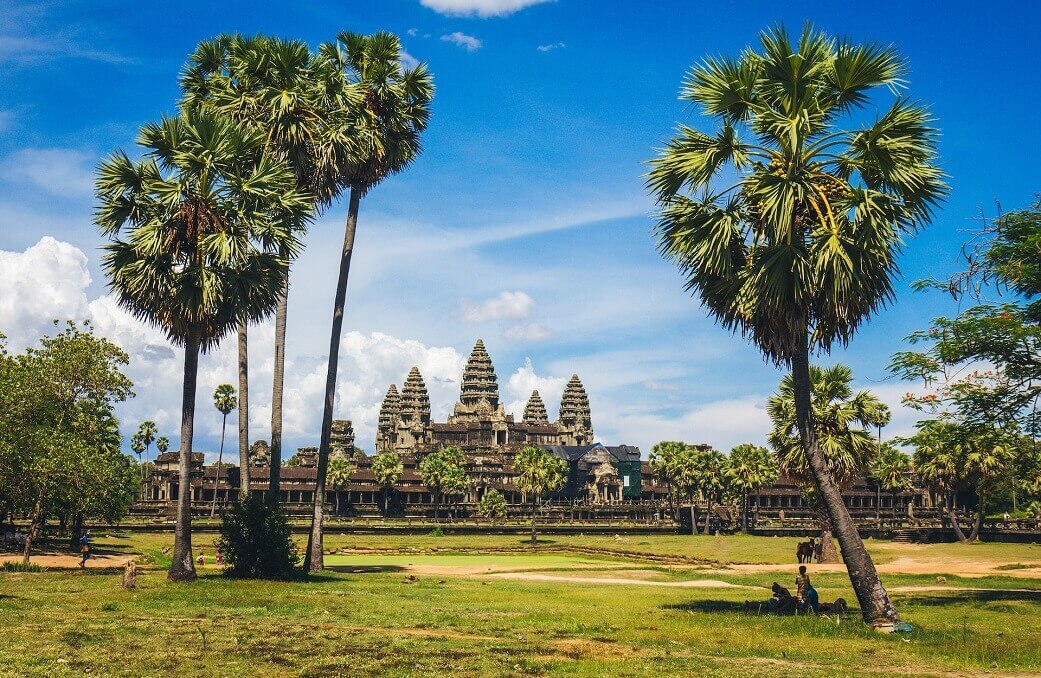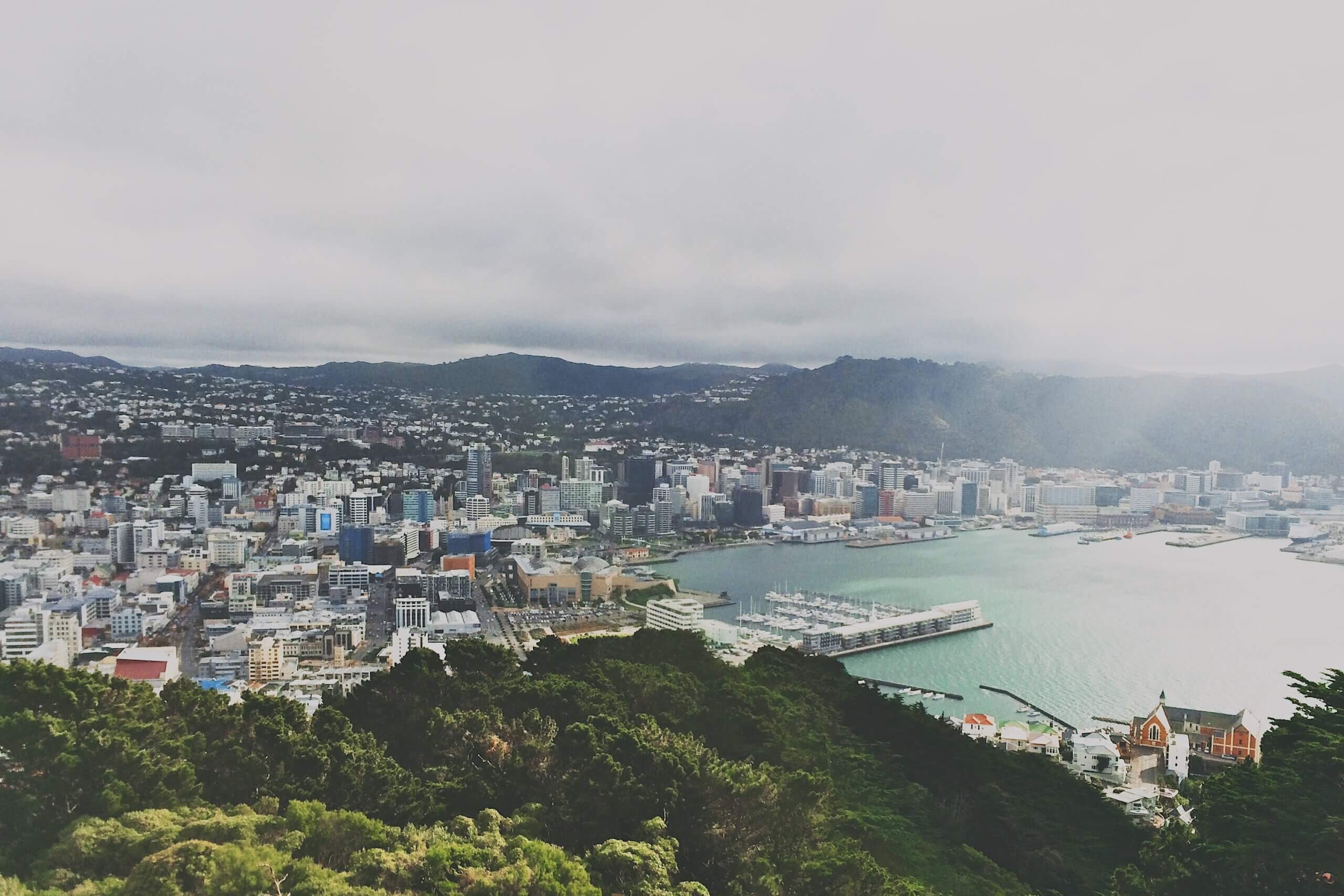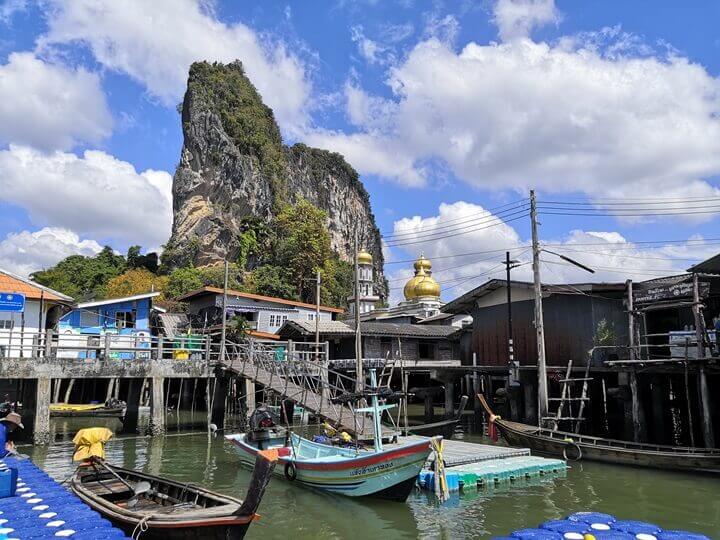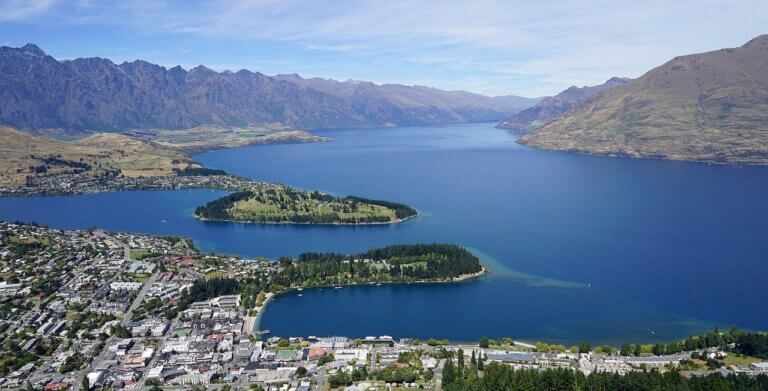The 12 Must-See Angkor Temples and Monuments in Cambodia
The Angkor Archaeological Park in Cambodia is a true historic wonder. With dozens of temples, palaces, bridges and other monuments to explore, you can easily spend weeks there. Unfortunately, most of us rarely have this much time at a destination. Don’t worry, this guide showcases the most magnificent Angkor Temples and other historic sites worth prioritising for your next trip.
A UNESCO World Heritage Site, the Angor Archaeological Park covers a roughly 400 square meter area in the Siem Reap province in the north-west of Cambodia. It was once home to the successive capitals of the mighty Khmer Empire that ruled from the 9th to the 15th centuries. The monuments that you can see in the park today are a testament to the Khmers’ wealth, power and engineering prowess.
The monumental structures of Angkor, from famous temples to city gates, are huge and complex. They are decorated with elaborate carvings, elegant sculptures and intricate bas-reliefs. Archaeological evidence suggests that some monuments may have also been adorned with precious stones. Considering how impressive Angkor looks today, we can only imagine how awe-inspiring it was in its prime.
I visited the Angkor Archaeological Park as part of my honeymoon in Southeast Asia. It was undoubtably one of the highlights of the trip.
Without further ado, let’s take a closer look into the must-see Angkor temples and other monuments.
Disclosure: Some of the links below are affiliate links, which means that at no additional cost to you, I may earn a small commission if you click through and make a purchase. Please note, I only recommend products and services that I know and love. Read full Privacy Policy here.
The Must-See Angkor Temples and Monuments in Cambodia
The guide presents the temples in chronological order. There is a mix of big names and lesser-known gems to showcase different sides to the park. I recommend spending at least three days exploring the area. Even better if you have more time. After all, the Angkor area is home to 72 temples.
You will find that some monuments are in a much better shape than others. Age, nature and political instability have all contributed to the deterioration of the Angkor monuments. Climate change and human activity continue to threaten its existence. International conservation efforts are underway but is a costly undertaking. However, seeing the ruins of once great cities is a great reminder of the impermanent nature of human existence.
Keep in mind that the Angkor temples are a place of spiritual significance for Cambodians. Be respectful and make sure to cover your knees and shoulders when you visit.
Pre Rup
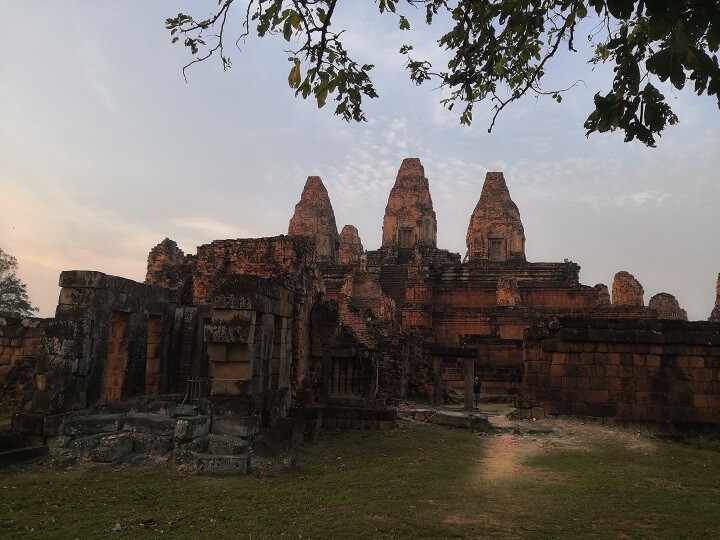
Built in the 10th century by King Rajendravarman II, this temple was dedicated to Shiva, one of the most important gods in the Hindu pantheon. The key feature of Pre Rup is the five towers arranged in a quincunx. They sit on top of a pyramidal base that symbolises Mount Meru, the residence of the gods. Intricate sculptures and carvings depicting stories from sacred Hindu texts adorn the temple walls.
The name of the temple means “turning the body” suggesting that its past association with funeral rites. It is widely believed that Pre Rup was once used as a crematorium. However, not all archaeologists agree with this theory.
Although Pre Rup underwent some restoration work in the 1930s, it’s not in the best condition. Many of the carvings and structures are severely damaged. However, this temple is still worth a visit.
Thanks to Pre Rup’s elevated position, you can enjoy great views over the surrounding countryside from its top level. The temple is also a popular spot for watching sunrise and sunset. This is when the reddish-brown laterite bricks that were used to build it, appear more golden in colour, creating a magical feel.
Keep in mind that Pre Rup can get quite busy. If you’d like to watch the sunset there, prepare to share the experience with many others.
Banteay Srei

This small and elegant temple is one of my personal favourites. Built in the mid 10th century, it is famous for its exquisite carvings. Other Angkor temples can’t match the intricacy and complexity of the ones adorning Banteay Srei.
Banteay Srei was established by Brahmin Yajnavaraha, guru to King Rajendravarman II. It was built from high-grade sandstone that gives the temple its unique pinkish colour. Banteay Srei’s layout consists of a central sanctuary with three towers surrounded by libraries and galleries.
Beautiful carvings depicting Hindu myths, natural world and scenes of everyday life cover pretty much every inch of the temple. The carvings are so delicate that some believe that only women could create them. As a result, Banteay Srei has been nicknamed the “Citadel of the Women”.
Although Banteay Srei is located 25 kilometres away from the main Angkor temples, it is popular amongst visitors. To beat the crowds, it might be a good idea to visit it early in the morning as it opens.
Overcrowding can also be damaging to the temple itself. To protect Banteay Srei, the central sanctuary is now off-limits to the public and you can only enjoy it from a distance.
Baphuon

Along with Angkor Wat, the Baphuon is arguably one of the most ambitious Khmer temples. It was established in the 11th century as the state-temple of King Udayadityavarman II. The Baphuon is built as a stepped pyramid with three tiers of galleries rising to a central tower. Sandstone was used for its construction. This material lends itself to intricate carvings and bas-reliefs which are still visible today.
Unfortunately, the Baphuon was too ambitious for its time and, as a result, has many strictural weaknesses. By the time restoration work began in the 1960s, it was in a state of disrepair. In the 1970, Angor fell to Khmer Rouge and work had to stop.
It resumed in the 90s, but many important documents on the structure of the temple had been destroyed during the war. After years of painstaking restoration, the temple re-opened its doors to the public in 2011. Not all structural issues have been solved, but at least it still stands and can be enjoyed by future generations.
On your visit to the Baphuon, take the time to walk around its galleries and enjoy the stunning bas-reliefs depicting Hindu myths. You can also climb to the top level of the temple to enjoy the views of the surrounded area. However, the stairs are narrow and incredibly steep. Walking down was especially stressful. If you are not comfortable with heights, it might be a good idea not to do the climb.
The Baphuon is just a short walk from the famous Bayon temple and right next to the Terrace of the Elephants. You can easily see these monuments in one go.
Angkor Wat
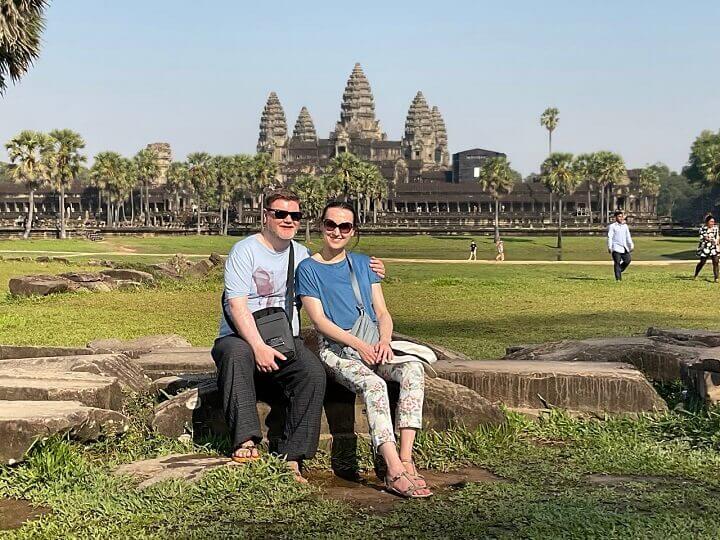
Angkor Wat is the most famous of all Angkor temples. Built in the early 12th century during the reign of Suryavarman II, it is the pinnacle of the Khmer architecture. The temple complex is huge and covers an area of over 400 acres. It consists of towers, galleries and courtyards symmetrically arranged around a central sanctuary.
The carefully thought-out layout of Angkor Wat symbolises Mount Meru, the home of the gods. The tallest structure of the complex, the 65-meter-tall central tower, represents its peak. The galleries and the surrounding moat symbolise the various levels of heaven and earth. Elaborate carvings reflecting the stories from Hindu mythology and Khmer history adorn the temple complex.
Angkor Wat is the place where architectural and engineering prowess combines with incredible artistic skill. It is not surprising that this temple is one of the most significant religious sites not only in Angkor, but the whole world. It is truly a bucket list destination.
The best time to enjoy the beauty of Angkor Wat is in the afternoon. This is when the light is the most complementary. However, this is also when crowds descend on this temple. An early morning visit may offer a more peaceful experience.
If you have time, why not visit Angkor Wat twice to see it at different times of the day? One visit is simply not enough to take in all the beauty of this majestic temple.
Ta Prohm
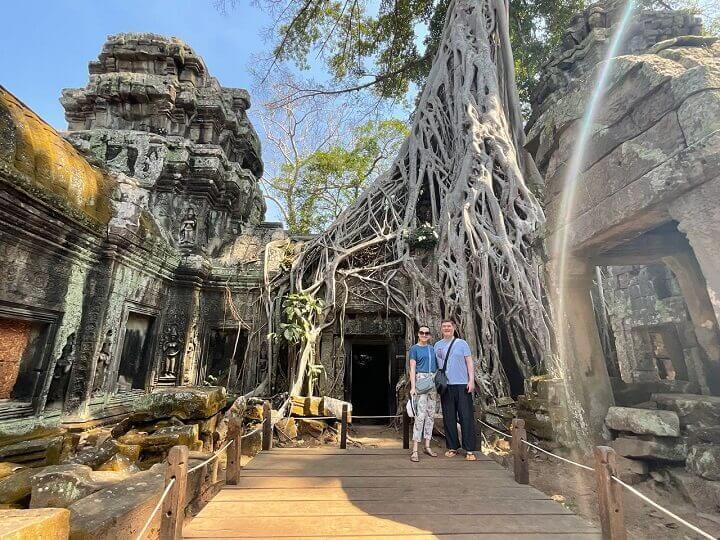
Another popular tourist spot within the Angkor Archaeological Park is Ta Prohm. It was established in the 12th century by King Jayavarman VII in honour of his mother. It was originally a Buddhist temple, so the beautiful carvings that adorn its walls represent myths from the Buddhist cosmology.
Ta Prohm is famous for its romantic atmosphere thanks to its semi-ruined state. The idea was to keep it pretty much the same as it was when it was discovered.
One of the most special features of Ta Prohm are huge trees that have grown around the structures of the temple. Some of them have been there for so long, they have become a part of the temple’s structure. Removing some of the trees may even damage its integrity.
Nevertheless, some trees need to be cut down. As they age and die, they may fall and damage the temple. More active restoration work is also underway. It may change the otherworldly atmosphere of Ta Prohm but is also necessary to protect the temple for future generations.
Ta Prohm is a relatively small temple, but it is popular with tourists. It’s been nicknamed The Tomb Raider temple because it was featured in the 2001 “Lara Croft: Tomb Raider” film with Angelina Jolie. Just like with other popular temples, an early morning or late afternoon visit may offer a less crowded experience.
Preah Khan
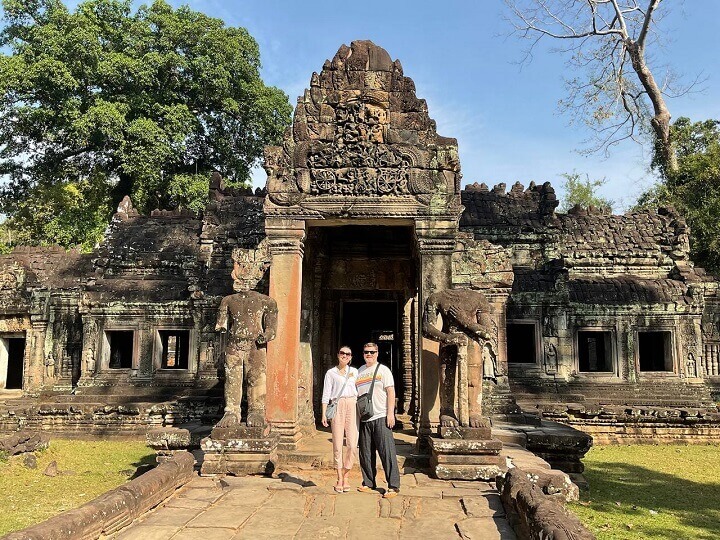
Another 12th century temple established during the reign of Jayavarman VII is Preah Khan. The King built in honour of his father. Preah Khan is also known as the “City of the Sacred Sword” as it once was a Buddhist monastery and centre of learning.
Preah Khan is a large temple with a complex structure. It is famous for its extensive system of corridors and passageways designed to accommodate many monks and visitors. Other structures in the temple include towers, libraries and halls arranged in a rectangular grid pattern around the central courtyard. Protective walls and a moat enclose the temple.
The structures are decorated with beautiful carvings inspired by Buddhist and Hindu cosmology. The entrances to the temple are guarded by rows of statues of gods and demons creating a stately atmosphere.
Just like Ta Prohm, Preah Khan is home to a few ancient trees that have engulfed some of its structures. However, there are plans to eventually remove them completely to protect the temple from further damage.
In general, Preah Khan is in a better state of preservation than Ta Prohm. It also receives slightly fewer visitors. The general advice of visiting either early in the morning or late in the afternoon still applies though. Allow a couple of hours to explore Preah Khan in detail.
Banteay Kdei
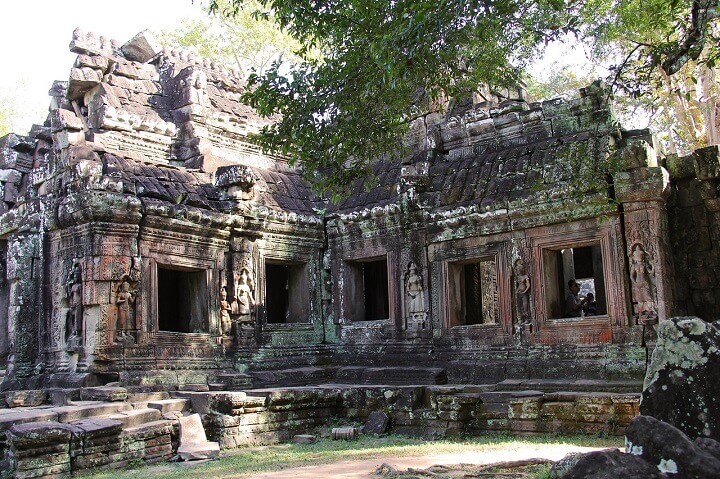
Banteay Kdei is another temple erected in the late 12th century during the reign of Jayavarman VII. His name will keep popping up as he was arguably one of the most prolific builders amongst the Khmer Kings.
Banteay Kdei is a more compact and less complex version of its famous neighbours, Ta Prohm and Preah Khan. It has a similar flat layout with three rectangular enclosures with a central sanctuary in its heart. The temple consists of numerous small chambers and galleries. It even has a nickname of “Citadel of Chambers” because of that.
Just like many other Angkor temples, Banteay Kdei is decorated with beautiful carvings and sculptures depicting Buddhist myths. Unfortunately, the temple was built of lower-grade sandstone, so time hasn’t been kind to it. Although restoration works are ongoing, this temple is still in a semi-ruined state.
Thick jungle surrounds Banteay Kdei, making it feel far removed from civilisation. Its semi-ruined state adds a special charm, reminiscent of Ta Prohm, but with noticeably fewer people. It’s fascinating to wander the remnants of its courtyards and chambers as the jungle is slowly claiming them.
As crowds tend to overlook Banteay Kdei in favour of Ta Prohm and Preah Khan, you will enjoy a much more peaceful experience there. As it is a smaller temple, I would allow for at least an hour of exploring it.
Neak Pean

Neak Pean is a hidden gem that organised tour groups seem to overlook. It was established in the late 12th century or early 13th century by King Jayavarman VII. It offers a different experience to other Angkor temples.
This small temple is located on an artificial island in the middle of a pond that symbolises the mythical lake Anavatapta in the Himalayas. According to legends, the waters of this lake could cure illness.
Neak Pean features a central sanctuary that sits on a circular platform in the middle of a pond. Two Naga snake statues encircle the sanctuary tower. The central pond and sanctuary are surrounded by four smaller ponds and chapels connected to the main sanctuary by walkways.
The temple was originally a place of healing and spiritual cleansing. Its water was believed to have curing powers. While this belief is no longer practiced, Neak Pean is still worth a stop to see a different side to the ancient Khmer culture. Plus, as a lesser-known temple, you can visit it at any time of day.
Ta Som
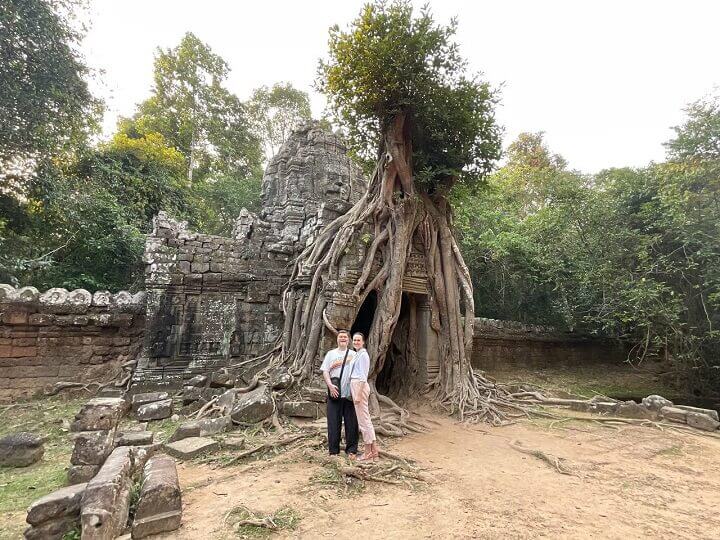
If you are looking for a respite from the crowds, consider adding Ta Som to your Angkor itinerary. Your groups don’t tend to visit this late 12th – early 13th century temple. It is relatively small and similar in style to other temples built during the reign of Jayavarman VII.
At the heart of the temple is a single tower surrounded by three rectangular enclosures. The impressive entrance gates are topped with large carved faces looking in each of the cardinal directions. It was Jayavarman VII’s signature motif, so you will see it in other temples built during his reign.
Ta Som has undergone only limited restoration, so it’s still in a state of semi-ruin. As you wander around it, you will notice lots of bricks and decorative pieces still lying on the ground. Nature is claiming the temple too. One of its most famous features is a giant strangler fig tree that has grown over the eastern gate.
If you choose to visit Ta Prom, you are likely to have this eery spot pretty much to yourself. Take your time to check out the beautiful carvings that adorn this temple. Despite its overall crumbling state, many carvings are still in a surprisingly good condition.
Angkor Thom – South Gate

The Angkor Archaeological Park is famous for its incredible temples. However, there are other structures worth including in your itinerary. Visitors can still see the remnants of the ancient city of Angkor Thom. It was the last capital of the Khmer Empire that lasted until the 15th century.
King Jayavarman VII founded the city in the late 12th century. It covers an area of 9 square kilometres and has a square layout. Fortified walls and a large moat protected the city from raiders. It also had symbolic value and projected power and authority over the Khmer empire.
Most of the city structures have disappeared. However, visitors can still enjoy the famous Bayon and Buphuon temples, as well as the structures that were once part of the royal palace. The city gates and parts of the protective wall are still standing too.
The South Gate is the most well-preserved among the five Angkor Thom entrance gates. It features an impressive causeway that crosses the moat. It is flanked by sculptures depicting demons and deities holding the giant Naga snakes. The Gate itself is topped by towers with smiling faces carved into them.
It’s quite a special feeling to enter the city through that ancient gate that invites you to experience some of the mysteries of Angkor. I recommend getting to the South Gate first thing in the morning to beat the crowds on their way to the famous monuments within Angkor Thom.
Terrace of the Elephants

Just a short walk from the Buphuon temple, you will find the Terrace of the Elephants. It is a high wall about 350 meters in length that used to front the Royal Palace.
This area was once home to the many court officials, priests, soldiers and (supposedly) thousands of the King’s concubines. The many structures of the palace were built of wood. Unfortunately, they are all gone.
The magnificent Terrace of the Elephants was built during the reign of Jayavarman VII and was used as a viewing platform during public ceremonies and as an audience hall. The King would regularly appear there to listen to his subjects’ concerns.
The terrace is decorated with incredible three-dimensional carvings of high complexity. Many of them feature different scenes with elephants. They were an important part of the Khmers’ life and culture. Alongside these, you can also spot depictions of deities and stories from sacred texts.
Morning is the best time to view the terrace. Take the time to enjoy the artistic skill and storytelling of the bas-reliefs left by the Khmer artisans. We can only imagine how regal the royal palace must have been hundreds of years ago.
Bayon
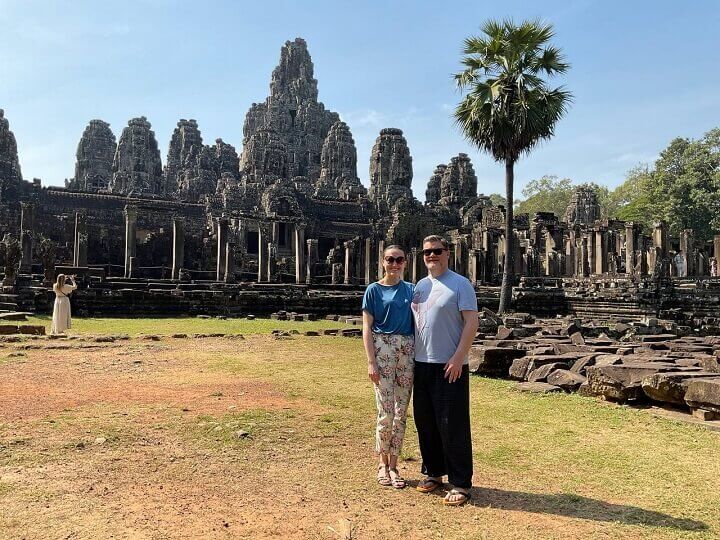
The impressive Bayon is the last major temple complex ever built by a Khmer King. Only a few smaller temples followed it in the 13th century. Bayon was King Jayavarman VII’s state temple established in the late 12th or early 13th century. Located right in the centre of the ancient Angkor Thom, it was the pinnacle of the King’s ambition and architectural vision.
Bayon has a complex and slightly crowded layout. It consists of three levels symbolising the sacred Mount Meru. The central sanctuary is surrounded by two enclosures that are made up of galleries and shrines. Elaborate bas-reliefs featuring scenes from everyday life, Cambodian history and religious myths cover the temple’s walls.
Bayon has been nicknamed the “Face temple” thanks to its most famous feature. It is home to 54 towers decorated with enigmatic smiling faces looking out in the cardinal directions. The debate on the identity of the owner of the face still rages on. Some archaeologists believe that it’s a Buddhist deity. Others think that the face belong to King Jayavarman VII. We will probably never find out the truth.
Time has unfortunately not been kind to Bayon’s towers. But the faces are still very much mesmerising. However, the temple’s many bar-reliefs are still in a good condition. When you visit Bayon, take your time to explore them. You might even be able to find quieter corners of the temple complex that many tourists never visit.
As Bayon is one of the most famous Angkor temples, expect it to be busy. To beat the crowds, head there in the early morning, before 8.30am, or late in the afternoon. You can easily combine a visit to Bayon with the nearby Buphuon and the Terrace of the Elephants.
When is the Best Time to Visit Angkor Temples
The best time to visit Angkor is during the dry season, from November to February. This is when humidity is low, and the temperatures are comfortable for sightseeing. However, this is also the high season for tourism.
Expect for the most famous spots within the archaeological park to be busy. You can avoid the worst of it by heading to the temples early in the morning, just after sunrise, or late in the afternoon. Also, Angkor crowds can be especially overwhelming Angkor during the Chinese New Year which normally takes place in January or February. You may want to check when it is on before booking your trip.
Average temperature starts to climb in late February. The heat is at its peak in April when average maximum temperatures reach 36°C (96.8°F). It’s best to avoid visiting Angkor then as the heat may become unbearable.
The rain season runs from May to October. This is when visitor numbers noticeably drop. If you don’t mind the rain and the heat, you can enjoy the sites in peace. This is also when the vegetation is lush, and local farmer plant rice.
If you are considering heading to Angkor during the rainy season, May to August would be a better choice. September and October see the heaviest rainfall of all.
How to Get to Angkor Temples
The closest town to the Angkor Archaeological Park is Siem Reap. Located five kilometres south of the park, most travellers choose Siem Reap as the base for exploring the Angkor temples. The town is home to an international airport. There are direct flights from major cities in Southeast Asia and China.
You can take a tuk-tuk or a taxi to get to your accommodation. Some hotels may offer transfers to and from the airport. Check in advance if your accommodation offers these. The journey from the airport to Siem Reap takes about 20 minutes.
Alternatively, you can travel to Siem Reap by bus or taxi from other cities in Cambodia or Thailand. Taking the bus is the most budget-friendly option, but it is also the most time-consuming one.
Getting Around Angkor
Getting from Siem Reap to Angkor is straight-forward. You can get a taxi or hire a tuk-tuk. The latter you can hire for the whole day if you need. The journey will take around 20 minutes, depending on the traffic. Alternatively, you can hire a bicycle or a scooter.
I recommend joining a guided tour, whether a small-group or a private one. You can explore the park independently with the help of a guidebook, of course. But I think a knowledgeable guide who knows all the best spots will greatly enhance your experience. Plus, they can arrange your transportation saving you time and hassle.
Angkor Temple Pass
To access the Angkor temples, overseas visitors need to purchase an Angkor temple pass at the official ticketing centre in Siem Reap. Alternatively, you can purchase your pass online on the official Angkor enterprise website.
You can choose from three different pass types depending on how much time you are planning on spending in Angkor:
- 1 Day – US $37
- 3 Days – US $62
- 7 Days – US $72
The good news is that if you opt for the 3-day or 7-day pass, you don’t have to visit on consecutive days. The 3-day pass is valid for 10 days from the date of purchase and the 7-day pass is valid for a month.
Having breaks between visits to Angkor is actually a good idea so you can avoid temple burnout. You don’t want to feel like all those incredible monuments look the same.
Guided Tours
My husband and I visited the Angkor temples on a private tour. We arranged it through a UK-based travel agency called Trailfinders. We had a fantastic guide, Ra who also took brilliant photos and videos of our visit. He took the photos of my husband and I featured in this article. You can contact him directly though his Facebook page.
Alternatively, you can book a tour through an online tour aggregator such as GetYourGuide. Here is a selection of top-rated options.
- Explore Angkor Complex Temples and Sunset Tour
- Angkor Wat: Small-Group Sunrise Tour
- From Siem Reap: 2-Day Small Group Temples Sunrise Tour
Where to Stay Near Angkor Temples
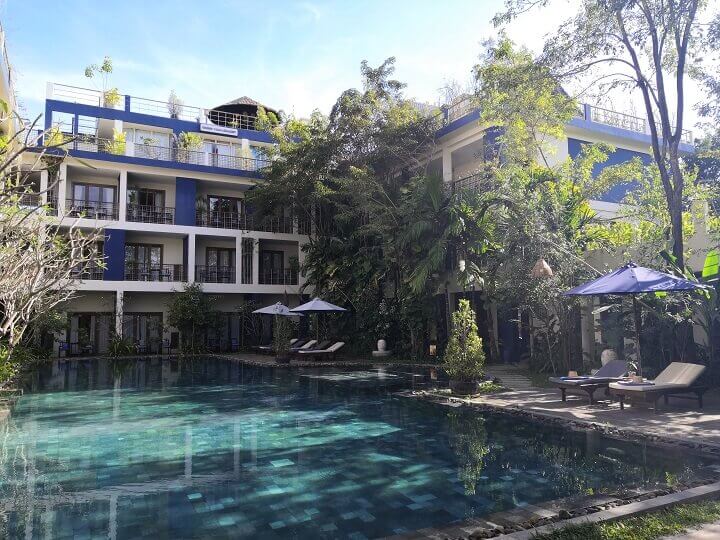
Most travellers use Siem Reap as the base for exploring Angkor temples. This resort town is relatively small. If you stay anywhere in or around it, getting to Angkor should be straight forward. There is a good selection of accommodation options, from budget guesthouses to luxury international chains.
On our most recent trip to Angkor, we stayed at the Sakmut Hotel & Spa. It’s a mid-range hotel located in a quiet part of town. There are a few eateries and street food stalls within walking distance of the hotel, but if you would like to be amid all the action, I would recommend another location. But if you’re after a peaceful base where you can recharge in-between sightseeing, a stay at Sakmut is perfect.
Final Thoughts
So here you have it. These are the most incredible Angkor temples and monuments to add to your itinerary.
In my opinion, the Angkor Archaeological Park is a true wonder of the world. This feat of architecture, engineering and craft should be on every traveller’s bucket list.
If you’d like to extend your Southeast Asia trip, why not combine a visit to Cambodia with an adventure in Thailand. It is another affordable destination that boasts amazing beaches, beautiful weather, vibrant cities and fascinating culture.
I highly recommend exploring the urban jungle that is Bangkok on your next trip to Thailand. Whether you’re spending two days or two weeks there, it has so much to offer in terms of fun activities and delicious food. To top this off, this is a city that is easy and cheap to get around.
Then balance your urban adventures with a stint on the beautiful island of Phuket. Famous for its stunning beaches and tropical landscapes, it is an ideal place for relaxing and recharging.
Couples especially are spoilt for choice in Phuket when it comes to beautiful locations for the perfect couple’s getaway.
FAQs: Angkor Temples & Monuments
The exact number of Angkor temples is unknown. It is currently believed that there are over a thousand different temples and structures in the area. These range from the major temples that are in relatively good condition to the ruined minor ones where only the foundations remain.
Angkor Wat is not part of either the original or new list of the Seven Wonders of the World. However, it is one of the most magnificent architectural masterpieces of its time. To this day, it inspires awe and wonder.
The temples of the Angkor Archaeological Park have been built over the course of several centuries. The oldest temples date back to the 9th century. The last Angkor temples were built in the 13th century.
Enjoyed this guide to the Angkor Temples and Monuments? Bookmark or pin it for later.

Related Reads
- Why Is Thailand So Cheap? Cost of Travel to Thailand in 2023
- Is There Uber in Thailand in 2023? Everything You Need to Know
- Does It Snow in Thailand? Everything You Need to Know
- The 12 Best Things to Do in Bangkok
- Is Phuket Worth Visiting in 2023? 10 Reasons to Visit Phuket
- 2 Days in Bangkok, Thailand: The Definitive Travel Itinerary
- Where to Stay in Phuket for Couples: The Best Areas and Hotels

